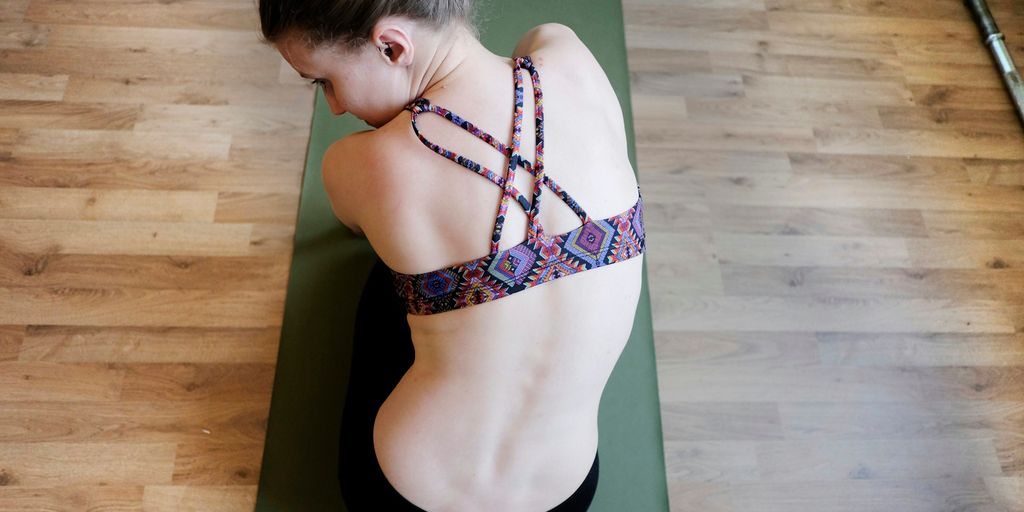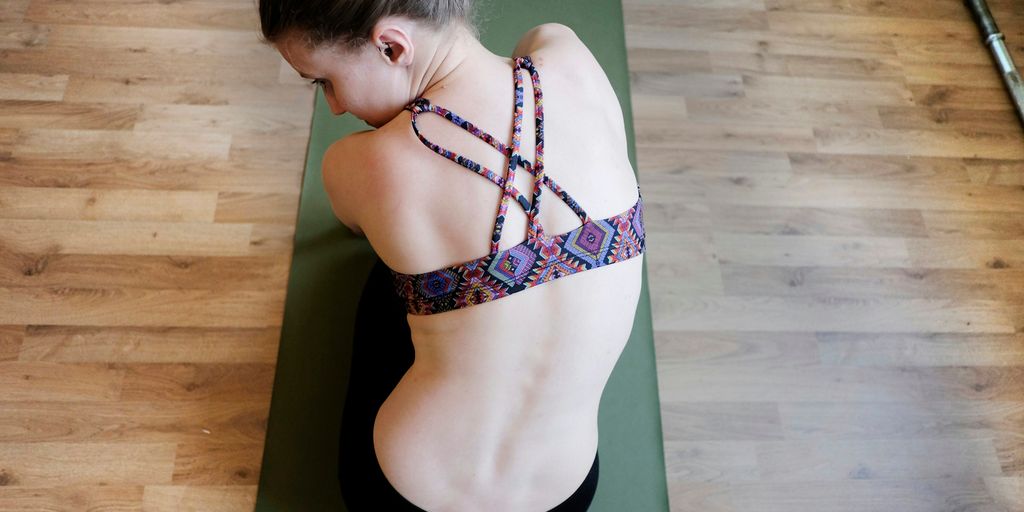
The Ultimate Guide to Choosing the Perfect Rubber Yoga Mat
Choosing the right yoga mat is essential for a comfortable and effective practice. Rubber yoga mats are a popular choice due to their eco-friendly nature, durability, and excellent grip. This guide will help you understand the benefits of rubber mats, the different types available, and how to select the perfect one for your needs. Additionally, you'll learn how to care for your mat and compare it to other materials. We'll also highlight top brands and budget-friendly options. Let's dive in!
Key Takeaways
- Rubber yoga mats are eco-friendly and provide great grip.
- There are natural, synthetic, and blended rubber mats to choose from.
- The thickness of your mat should match your yoga style and joint needs.
- Proper care extends the life of your rubber yoga mat.
- There are both high-end and budget-friendly rubber yoga mat options.
Understanding the Benefits of a Rubber Yoga Mat
Eco-Friendly and Sustainable
Rubber yoga mats are a great choice for the environment. They are often made from natural materials, which means they break down more easily when thrown away. This helps reduce waste and keeps our planet cleaner. Plus, many rubber mats are made without harmful chemicals, making them safer for you and the Earth.
Durability and Longevity
One of the best things about rubber yoga mats is how long they last. These mats are built to withstand a lot of use, so you won't need to replace them often. This makes them a smart investment for anyone who practices yoga regularly. The strong material also means they won't tear or wear out quickly, even with heavy use.
Superior Grip and Traction
Rubber yoga mats are known for their excellent grip. This means you can stay stable and avoid slipping, even during intense or sweaty practices. The natural stickiness of rubber helps keep your hands and feet in place, so you can focus on your poses without worrying about falling. This makes rubber mats a top choice for many yogis.
Different Types of Rubber Yoga Mats
Natural Rubber Mats
Natural rubber mats are made from the sap of rubber trees. These mats are eco-friendly and biodegradable, making them a great choice for those who care about the environment. They offer excellent grip and are usually free from harmful chemicals.
Synthetic Rubber Mats
Synthetic rubber mats are made from man-made materials. They are often more affordable than natural rubber mats and can be just as durable. However, they may contain chemicals that some people prefer to avoid.
Blended Rubber Mats
Blended rubber mats combine natural and synthetic materials. This blend aims to offer the best of both worlds: the eco-friendliness of natural rubber and the durability of synthetic rubber. These mats are a good middle-ground option for many yogis.
How to Choose the Right Thickness for Your Rubber Yoga Mat
Consider Your Yoga Style
When picking the right thickness for your rubber yoga mat, think about your yoga style. If you practice a lot of balance poses, a thinner mat might be better. Thinner mats offer more stability. On the other hand, if you do a lot of floor exercises, a thicker mat can provide more comfort.
Impact on Joint Health
Your joints are important, so choose a mat that protects them. Thicker mats can help cushion your knees, wrists, and hips. This is especially important if you have sensitive joints or past injuries. A common thickness option is 1/8 inch (3mm), which offers a good balance of comfort and support.
Portability and Storage
Think about how you will carry and store your mat. Thicker mats are usually heavier and take up more space. If you travel a lot or go to different yoga studios, a thinner mat might be easier to carry. Ultra-thin mats, like those that are 1/16 inch (1.5mm), are great for travel and stability.
Choosing the right thickness for your yoga mat can make a big difference in your practice. Make sure to consider your needs and preferences.
Caring for Your Rubber Yoga Mat
Cleaning and Maintenance Tips
To keep your rubber yoga mat in top shape, regular cleaning is essential. Wipe down your mat after each use with a damp cloth and mild soap. Avoid using harsh chemicals as they can damage the rubber. For a deeper clean, soak your mat in a mixture of water and vinegar, then rinse thoroughly. Always air dry your mat and avoid direct sunlight to prevent it from becoming brittle.
Proper Storage Solutions
Storing your mat correctly can prolong its life. Roll your mat loosely and store it in a cool, dry place. Using a mat bag can protect it from dust and dirt. If you practice yoga outdoors, make sure to clean your mat before storing it to remove any debris.
When to Replace Your Mat
Even with proper care, rubber yoga mats will eventually wear out. Look for signs like cracks, thinning, or loss of grip. If your mat no longer provides the support you need, it's time to get a new one. Regular maintenance can extend the life of your mat, but knowing when to replace it is just as important.
Comparing Rubber Yoga Mats to Other Materials
Rubber vs. PVC Mats
Rubber mats are eco-friendly and sustainable, while PVC mats are not. Rubber mats offer better grip and traction, but PVC mats are more affordable. However, PVC mats are not as durable and can wear out quickly.
Rubber vs. TPE Mats
Rubber mats provide superior grip and are more durable than TPE mats. TPE mats are non-toxic and recyclable, making them a good choice for those looking for an eco-friendly option. However, rubber mats tend to last longer and offer better support.
Rubber vs. Cork Mats
Rubber mats and cork mats both offer excellent grip. Cork mats are naturally antimicrobial, which helps keep them clean. Rubber mats are more durable and provide better cushioning. Cork mats can be a bit more expensive, but they are a great choice for those looking for a natural and clean option.
Top Brands for Rubber Yoga Mats
Liforme
Liforme is known for its high-quality rubber yoga mats that offer excellent grip and alignment guides. These mats are eco-friendly and biodegradable, making them a top choice for environmentally conscious yogis.
Manduka
Manduka mats are celebrated for their durability and comfort. Their PRO series is particularly popular among yoga practitioners for its dense cushioning and long-lasting material. Manduka also focuses on sustainability, using non-toxic materials in their products.
Jade Yoga
Jade Yoga mats are made from natural rubber, providing a non-slip surface that is perfect for all types of yoga. They are also committed to giving back to the environment, planting a tree for every mat sold. Jade Yoga mats are known for their excellent grip and eco-friendly production process.
Choosing a mat from one of these top brands ensures you get a product that is both high-quality and environmentally friendly.
Budget-Friendly Options for Rubber Yoga Mats
Affordable Yet Durable Choices
Finding a good yoga mat doesn't have to break the bank. Affordable yet durable choices are available if you know where to look. Many brands offer high-quality mats at lower prices, ensuring you get the best value for your money. Look for mats that balance cost and quality, so you don't have to compromise on your practice.
Where to Find Discounts
There are several places to find discounts on rubber yoga mats. Online retailers often have sales, especially during holidays or end-of-season clearances. Additionally, signing up for newsletters from yoga mat companies can give you access to exclusive deals and promotions. Don't forget to check out local stores, as they sometimes offer in-store discounts that aren't available online.
Second-Hand Rubber Mats
If you're open to it, buying a second-hand rubber yoga mat can be a great way to save money. Many people sell their gently used mats at a fraction of the original price. Check out online marketplaces, local classified ads, or even community boards at your yoga studio. Just make sure to inspect the mat for any signs of wear and tear before purchasing.
Remember, the ultimate guide to choosing the right yoga mat for your practice includes considering budget-friendly options. This way, you can enjoy your yoga sessions without worrying about the cost.
Looking for affordable rubber yoga mats? Check out our budget-friendly options that don't compromise on quality. Whether you're a beginner or a seasoned yogi, we have the perfect mat for you. Visit our website to explore our wide range of mats and find the one that suits your needs.
Conclusion
Choosing the right rubber yoga mat can make a big difference in your practice. It's important to think about what you need, like thickness, grip, and durability. Remember to consider your budget too. A good mat can help you stay comfortable and safe during your yoga sessions. Take your time, try out a few options, and pick the one that feels best for you. Happy practicing!
Frequently Asked Questions
What makes rubber yoga mats eco-friendly?
Rubber yoga mats are often made from natural rubber, which comes from rubber trees. This makes them a more sustainable choice compared to mats made from synthetic materials like PVC.
How do I clean my rubber yoga mat?
To clean your rubber yoga mat, mix a solution of water and a few drops of mild soap. Use a soft cloth to wipe down the mat, then let it air dry completely before rolling it up.
What thickness is best for a rubber yoga mat?
The best thickness for a rubber yoga mat depends on your yoga style. For example, thicker mats are better for gentle yoga styles, while thinner mats are ideal for more active practices.
Are rubber yoga mats good for people with joint issues?
Yes, rubber yoga mats offer good cushioning, which can help protect your joints during practice. Choosing the right thickness can further enhance this benefit.
Can I use a rubber yoga mat outdoors?
Yes, you can use a rubber yoga mat outdoors. However, make sure to clean it after each use to remove dirt and debris, and avoid leaving it in direct sunlight for long periods.
How long do rubber yoga mats typically last?
Rubber yoga mats are known for their durability. With proper care, a good-quality rubber mat can last several years.


